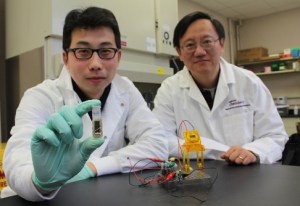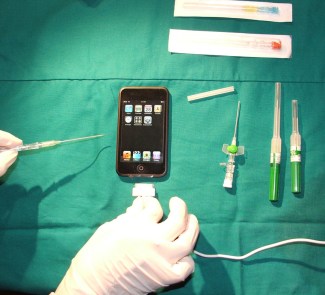Researchers at Virginia Tech in the US have developed the first battery made with sugar. This is another example of how biomimicry can change the world of technology.
Just a few weeks ago, in Think Big we were explaining a few of the more striking examples of biomimicry, or technology that is created and developed using nature as its source of inspiration. These are spectacular advances: cars that look like bees and fish, medical devices made based on certain natural mechanisms of sharks, and robots that can run on water.
Examples of biomimicry vary widely, and they are undoubtedly spectacular. Their application in the electronics sector is also interesting; for example, Qualcomm has already drawn its inspiration from butterflies to manufacture the new generation of e-book displays, so that they don’t reflect light and to let us read more comfortably.
Electronics looks to nature for inspiration
Qualcomm’s example seems to have had an impact on the electronics sector, and there are now more initiatives that are looking to nature for models to manufacture and develop innovative devices. The latest project inspired by biomimicry is at Virginia Tech, which is a pioneer in R&D&I.
For technological development, engineers there have focused on living organisms, because we use sugar for fuel to function. The combination of chemical reactions that take place in our bodies, known as metabolism, allows us to use sugar (in addition to other chemical compounds) to produce energy and generate the structures that form part of our bodies.
 The work, now published in Nature Communications, has focused on creating a battery that uses sugar for fuel.
The work, now published in Nature Communications, has focused on creating a battery that uses sugar for fuel.
Many of the devices that we use every day use lithium ion batteries, despite the fact that the supply of lithium worldwide is quite limited; it is only produced in countries such as Bolivia, China, Chile, Argentina and Australia. If we could manage to switch from these batteries to the new one developed at Virginia Tech and based on biomimicry, we would have a much safer and abundant “fuel”.
But will these innovative batteries work? The combination of proteins used by the US scientists does not exist as such in nature, but researchers could adjust the average life of the battery by changing the concentration of sugar.
Based on the initial results of their experiments, it seems to work. The innovative batteries, manufactured thanks to biomimicry, have an energy density that is 10 times greater than that of conventional batteries. Also, the use of sugar instead of lithium means that they can be recharged.
But the researchers at Virginia Tech still have significant hurdles ahead of them. On one hand, they have to increase the average life of these sugar batteries, and on the other, reduce the “sensitivity” of the proteins that are involved in the catalytic process, which become inactive if the temperature increases too much.
But, while these challenges are difficult to overcome, it is true that biomimicry-inspired research is achieving spectacular results. At a time when technology is becoming more and more a part of our day-to-day lives, it’s strange to see how we still look to nature for ideas to continue to innovate.
Images | Dept. of Energy Solar (Flickr), Virginia Tech









